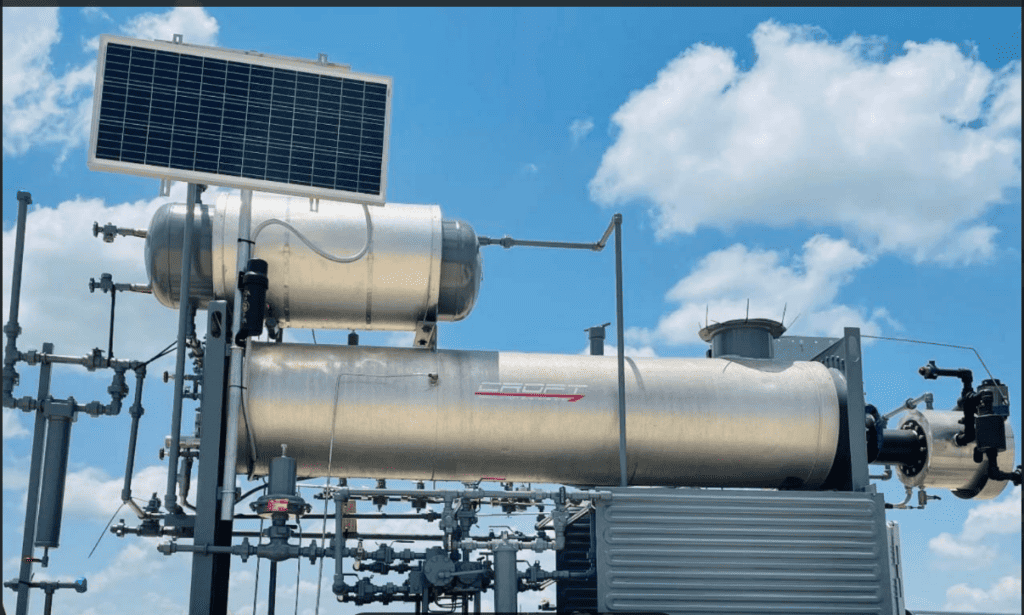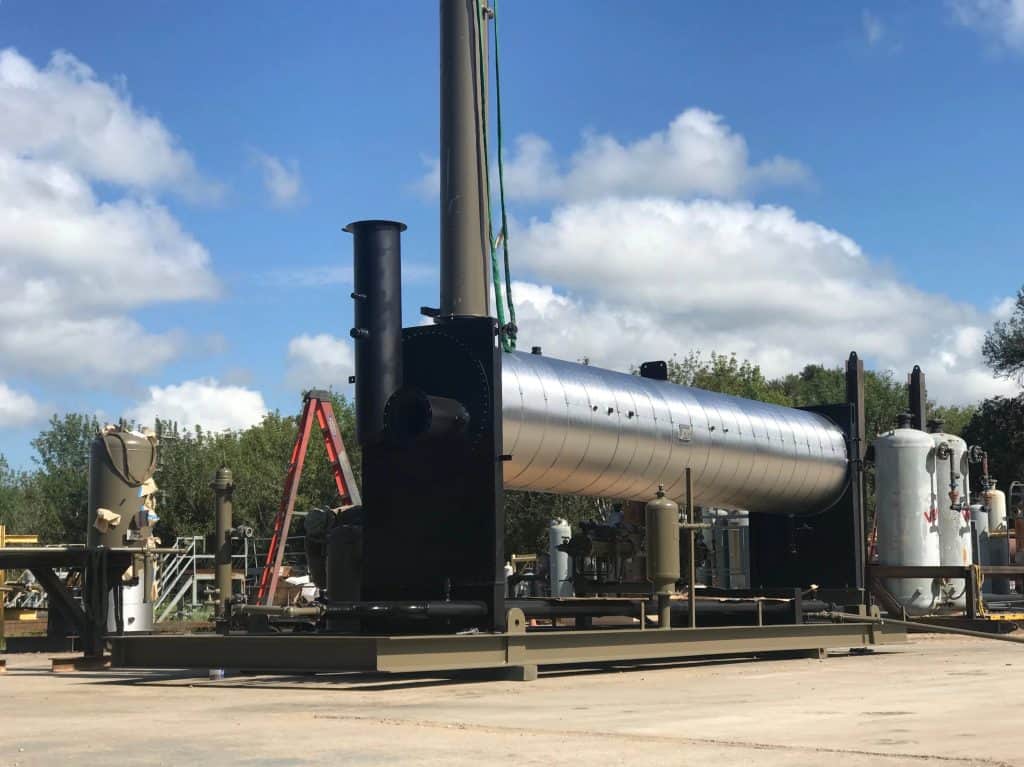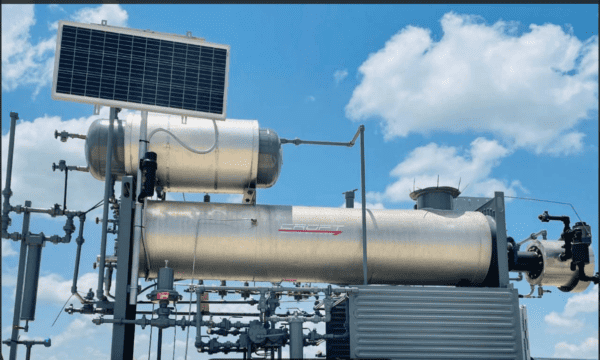Natural gas, a vital energy source for various industries, often requires careful treatment before being transported and utilized efficiently. Dehydration is a critical process in preparing natural gas for distribution. This post delves into the fascinating world of Tri-ethylene Glycol (TEG) systems, a standard method for natural gas dehydration.
We explore the importance of this process, how TEG units work, the components involved, and the benefits of using a glycol dehydration system, with a focus on the expertise of Croft Productions in this field.
Understanding the Need for Glycol Dehydration Units

Many pipelines and gathering systems face the challenge of removing water vapor from natural gas, a process known as natural gas dehydration. This essential step reduces corrosion in pipelines and prevents the formation of hydrates, which can obstruct pipelines and disrupt operations. The most prevalent technique for dehydrating natural gas in the field involves using glycol dehydrators or TEG units.
These systems use Tri-ethylene glycol (TEG) to absorb water vapor from the natural gas and then regenerate the glycol for continuous reuse within the unit. Standard units are designed to meet a water content outlet specification of less than 7 lbs./MMcf, but upgraded units can achieve even stricter specifications of less than 3 lbs./MMcf.
Croft Productions, Experts in Glycol Dehydration

Croft Productions are experts in glycol dehydration systems, offering refurbished and new glycol dehydrators. With decades of experience, Croft has developed a comprehensive testing and inspection plan to address concerns and incorporate enhancements into their designs for optimal performance. Croft leverages optimal design choices and improves areas prone to issues, resulting in robust and operator-friendly glycol units. They prioritize essential features required for proper dehydration while aiming to minimize operational problems and exceed performance requirements.
Components and Upgrades for Glycol Dehydration Units
Croft Productions offers a range of upgrade options to enhance glycol units’ functionality and efficiency. These upgrades include:
BTEX Units

BTEX units, also known as BTEX condenser units, are valuable accessories or upgrades for glycol dehydration units. These units meet safety and environmental regulations by reducing harmful elements such as Benzene, Toluene, Ethylbenzene, and Xylene (BTEX) commonly found in crude oil and gas production. Besides reducing emissions, BTEX units recover sellable concentrates, leading to cost savings.
Burner Management Systems (BMS)
Burner Management Systems provide:
- Temperature control for glycol dehydrators.
- Ensuring safe start-ups.
- Emergency shutdowns.
- Remote monitoring of burners.
These systems enhance safety and reduce emissions from TEG units, contributing to a more environmentally friendly operation.
The Glycol Dehydration Process – How It Works
- A glycol dehydration unit comprises two major components: the contact tower and the regeneration skid. Here’s a simplified overview of how the process works:
- Gas enters the bottom of the contact tower, also known as an absorber, while lean glycol is pumped into the top of the tower.
- The gas and glycol come into contact, and the glycol absorbs the water vapor from the natural gas as they pass through specially designed internals within the tower.
- After reaching the bottom of the contactor tower, the glycol is sent to the regeneration skid to remove the absorbed water. This involves a series of steps, including separation, filtration, and heating in a reboiler, which raises the glycol’s temperature to around 375-400°F, boiling the water out of the glycol.
- Once regenerated, the glycol is pumped back into the contact tower to repeat the process, ensuring continuous dehydration of the natural gas.
Glycol Unit Sizing
Properly sizing a glycol natural gas dehydration unit is crucial for efficient operation. Sizing involves:
- Determining the correct contact tower with a regeneration skid.
- Considering various parameters such as volume.
- Pressure.
- Water content.
- Outlet water content requirements.
The choice of internals within the tower depends on the application’s parameters and sizing requirements. Different types of internals, such as random packing, bubble cap trays, and structured packing, are selected based on the tower’s diameter and the application’s volume.
The size of regeneration systems is determined by the circulation rate required to remove water vapor from the natural gas stream. Smaller regeneration skids can be paired with larger towers for applications with minimal water vapor removal needs, while larger skids are suitable for high-water-content removal applications.
Features and Benefits of Glycol Dehydration Units
Croft Productions emphasizes several key features and benefits of their glycol dehydration units, including:
- Inclusion of all standard design components.
- Enhanced filtration for improved glycol regeneration.
- High-temperature paint for components exposed to high heat.
- Specialized insulation designed for ambient conditions.
- Lower heat flux on the firetube for improved safety.
- Customizable options to meet specific client requirements.
Partner with Croft Productions
Tri-ethylene Glycol (TEG) systems play a crucial role in natural gas dehydration, ensuring that the gas meets stringent quality and safety standards. With its extensive experience in glycol dehydration units, Croft Productions offers refurbished and new systems and upgrades to enhance their performance and environmental sustainability. Understanding the importance of glycol dehydration and the expertise available at Croft Productions can help you optimize your natural gas processing operations for greater efficiency and reliability.












